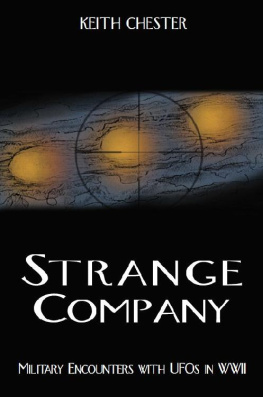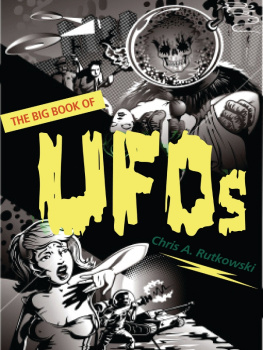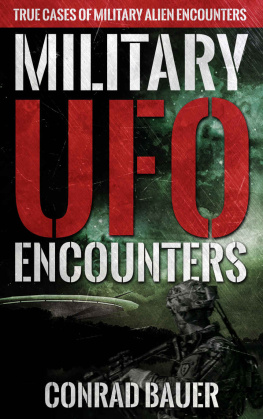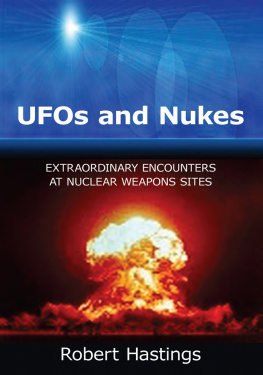Keith Chester - Strange Company: Military Encounters with UFOs in WWII
Here you can read online Keith Chester - Strange Company: Military Encounters with UFOs in WWII full text of the book (entire story) in english for free. Download pdf and epub, get meaning, cover and reviews about this ebook. year: 2007, publisher: Anomalist Books, genre: History. Description of the work, (preface) as well as reviews are available. Best literature library LitArk.com created for fans of good reading and offers a wide selection of genres:
Romance novel
Science fiction
Adventure
Detective
Science
History
Home and family
Prose
Art
Politics
Computer
Non-fiction
Religion
Business
Children
Humor
Choose a favorite category and find really read worthwhile books. Enjoy immersion in the world of imagination, feel the emotions of the characters or learn something new for yourself, make an fascinating discovery.
- Book:Strange Company: Military Encounters with UFOs in WWII
- Author:
- Publisher:Anomalist Books
- Genre:
- Year:2007
- Rating:3 / 5
- Favourites:Add to favourites
- Your mark:
- 60
- 1
- 2
- 3
- 4
- 5
Strange Company: Military Encounters with UFOs in WWII: summary, description and annotation
We offer to read an annotation, description, summary or preface (depends on what the author of the book "Strange Company: Military Encounters with UFOs in WWII" wrote himself). If you haven't found the necessary information about the book — write in the comments, we will try to find it.
Strange Company: Military Encounters with UFOs in WWII — read online for free the complete book (whole text) full work
Below is the text of the book, divided by pages. System saving the place of the last page read, allows you to conveniently read the book "Strange Company: Military Encounters with UFOs in WWII" online for free, without having to search again every time where you left off. Put a bookmark, and you can go to the page where you finished reading at any time.
Font size:
Interval:
Bookmark:
Strange Company:
Military Encounters
with UFOs in WWII
Keith Chester

Anomalist Books
San Antonio * New York
An Original Publication of Anomalist Books
Strange Company
Copyright 2007 by Keith Chester
ISBN: 1-933665-70-X
All rights reserved, including the right to reproduce this book or portions thereof in any form whatsoever.
Cover image: An artists interpretation based on Leonard Stringfields original sketch of the foo fighters he witnessed in August of 1945.
Back cover auhor photo by Nancy Chester and Richard Callan.
Book design by Seale Studios
For information about Anomalist Books, go to anomalistbooks.com or write to:
Anomalist Books 5150 Broadway #108 San Antonio, TX 78209 |
CONTENTS
This book is dedicated to my friend and mentor:
Mr. Leonard H. Stringfield

Sergeant Leonard H. Stringfield.
November 1945. (Courtesy Mrs. Dell Stringfield)
Foreword
In this eye-opening, thoroughly researched book, bristling with surprising revelations, Keith Chester challenges decades of conventional wisdom about the UFO phenomenon.
UFO history is ordinarily judged to date from Kenneth Arnolds exhaustingly chronicled June 24, 1947, sighting over Mount Rainier, Washington, which was followed by the first of many waves that continue to this day. Nobody asserts, of course, that UFOs actually begin on that legendary Tuesday afternoon; sightings of aerial anomalies are known to have been reported decades some claim centuries earlier. But it is assumed that the phenomenon as a more or less constant presence among the worlds enigmas dates to the post-war period. Strange Company shows how wrong this standard view is.
Chester does not make the point explicitly, so I will do so here:
The persistent (as opposed to occasional) UFO phenomenon, in just about all of its varieties, arrived during World War II, not in 1947. Ufologists have been aware of foo fighters indeed, newspaper accounts in the summer of 1947 mention them as predating flying saucers but this book documents just how remarkably frequent and ubiquitous encounters with them were.
It also demonstrates that foo fighters were an inclusive phrase, which did not refer simply to nebulous lights, but to structured craft-like objects as well. Witnesses, pilots and aircrews prominent among them, were convinced that the phenomena were under intelligent control. In common with untold numbers of observers in later years, they were baffled by the objects extraordinary performance characteristics. Only the huge distraction of global conflict not to mention the demands of military secrecy kept this curious development from rising to the level of widespread popular attention.
Having written about it extensively, I know something about UFO history, but I knew only a fraction of the story Keith Chester tells here. I am certain that whether you are a novice or a veteran of ufology, just about every page here will supply you with new information and fresh insight. Filling a huge gap in both the literature and our understanding, Strange Company will be an indispensable UFO book.
Jerome Clark
April 16, 2007
Introduction
It was a time when Buck Rogers and Flash Gordon, characters who appeared in the pages of science fiction, lived in a world of astonishing inventions: rocket ships, space travel, and powerful weapons. These fictional heroes represented the future, and that future was taking shape on Earth.
Mankind had reached a threshold in the forth decade of the twentieth century. There were unprecedented scientific and technological achievements, but despite such progress, humanity was entering one of its darkest chapters. By 1933, a gathering storm threatened the entire civilized world. It finally struck on September 1, 1939, as the German war machine crossed into Poland unleashing newly developed blitzkrieg tactics and lethal firepower. World War II gripped the world with terror for the next six years.
Both civilians and military personnel saw numerous highly unconventional aircraft around the world prior to and during World War II. From the wars outbreak in 1939, these unconventional aircraft were observed in all theaters of operation in a variety of shapes, sizes, and colors. They had extraordinary flight performance capabilities, were able to travel at phenomenal speeds, and could avoid radar detection. These remarkable objects seemed to come straight from the pages of science fiction.
Confusing the issue, these unconventional aircraft were sighted along with enemy weaponry and pyrotechnic activity: there were antiaircraft artillery rounds (commonly referred to as flak); an assortment of flares, some designed to psychologically spook the airmen; rockets and missiles of all sizes; and jet and rocket-propelled aircraft. All these sightings were listed under the heading of phenomena or phenomenon in military intelligence memoranda. With each passing year, though unconventional aircraft sightings defied explanation, they were usually lumped together with flares, rockets, and experimental aircraft.
During World War II, the term Unidentified Flying Object (UFO) did not exist. Instead, these strange and mysterious aircraft or objects were labeled with whatever term the observer felt like using at the time. Air crews called them meteors, freaks, and balls of fire. Those names were entered in the crews mission report, and from there, if the name stuck, it would be used in later reports to describe the same phenomenon. It was not until 1945 that these objects became known as Foo Fighters.
At this point, I would like to provide the reader with some background regarding how this book came about. It all started in May of 1989. During my first UFO investigation, I was preparing to inteview a witness with second-hand knowledge of a UFO allegedly recovered by the United States government.(1) Having no experience with this kind of interview, I knew a game plan of sorts was needed. Understanding the importance of obtaining accurate and untainted information, I wanted to speak with someone in the field who might be able to provide some advice.
My first step was placing an impromptu telephone call to Leonard Stringfield, a well-known and well-respected UFO author and researcher. Stringfield had already dedicated nearly forty years to the subject, focusing the last ten years on what he called UFO Crash and Retrievals. Introducing myself, I explained why I had called, and asked if he would be interested in offering his advice and guidance. To my surprise, he was very receptive to helping me.
As a result, Stringfield and I became fast friends and continued communicating with each other long after my investigation was closed. During one of our telephone conversations, we discussed Stringfields personal wartime foo fighter observation. His sighting occurred during the late summer of 1945. At that time, he was flying into mainland Japan, assigned to an intelligence unit with the Fifth Air Force. In broad daylight, he observed a formation of three circular, wingless aircraft, apparently under intelligent control.
Having read about the foo fighters in earlier intelligence reports, Stringfield was certain he had seen the same things. Strangely, though, the war was over, and the Allied Air Forces had complete air supremacy, so he was convinced that what he had seen were not enemy aircraft. Moreover, as far as he was concerned, the objects were nothing like any aircraft he had ever seen prior to, during, or after the war.
Font size:
Interval:
Bookmark:
Similar books «Strange Company: Military Encounters with UFOs in WWII»
Look at similar books to Strange Company: Military Encounters with UFOs in WWII. We have selected literature similar in name and meaning in the hope of providing readers with more options to find new, interesting, not yet read works.
Discussion, reviews of the book Strange Company: Military Encounters with UFOs in WWII and just readers' own opinions. Leave your comments, write what you think about the work, its meaning or the main characters. Specify what exactly you liked and what you didn't like, and why you think so.











